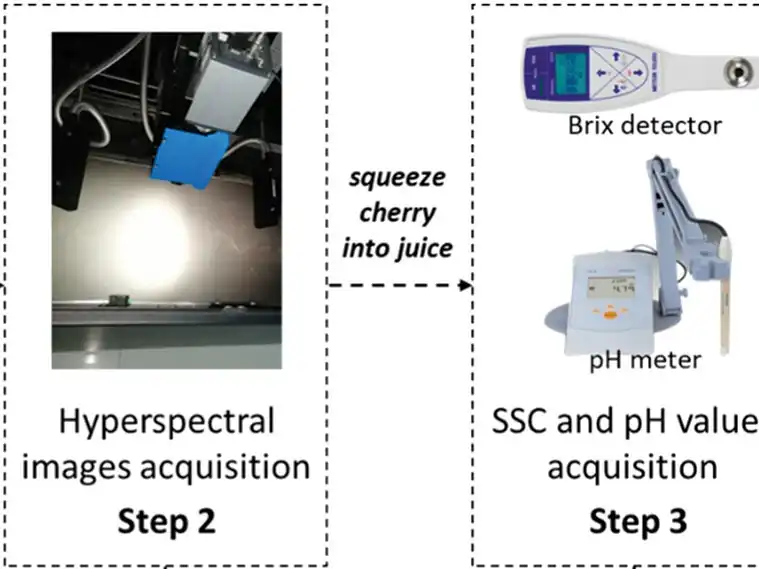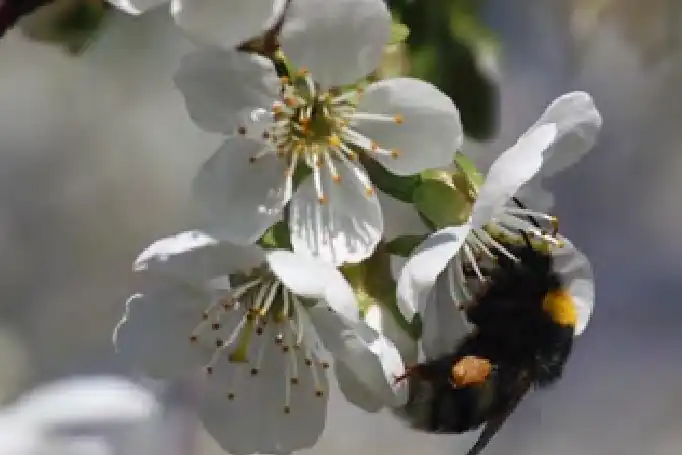Aragon is the leading autonomous community in cherry production, with an annual average of nearly 50,000 tons, representing 41% of the total national output.
Due to the unusually warm winter, flowering occurred earlier this year, as seen along the various tourist trails organized across the three Aragonese provinces to admire the cherry blossoms.
This suggests a promising harvest, pending the evolution of fruit set or potential setbacks from adverse weather events such as late frosts or the recent heavy rains, which may affect production.
 Figure 1. Cherry orchard trained in the low Spanish vase system
Figure 1. Cherry orchard trained in the low Spanish vase system
The industry is concerned about prices, high production costs, and the difficulty in finding labor and accommodations for workers.
Insurance Issues and Cultivation
Another issue involves agricultural insurance which, according to UAGA, “has increased in cost and now excludes coverage for cherry splitting,” meaning farmers will not receive compensation in the event of rain.
Furthermore, the same agricultural organization reported that Agroseguro is not allowing fruit growers from the Calatayud area, who have reported claims in recent years, to take out insurance against frost and rain damage.
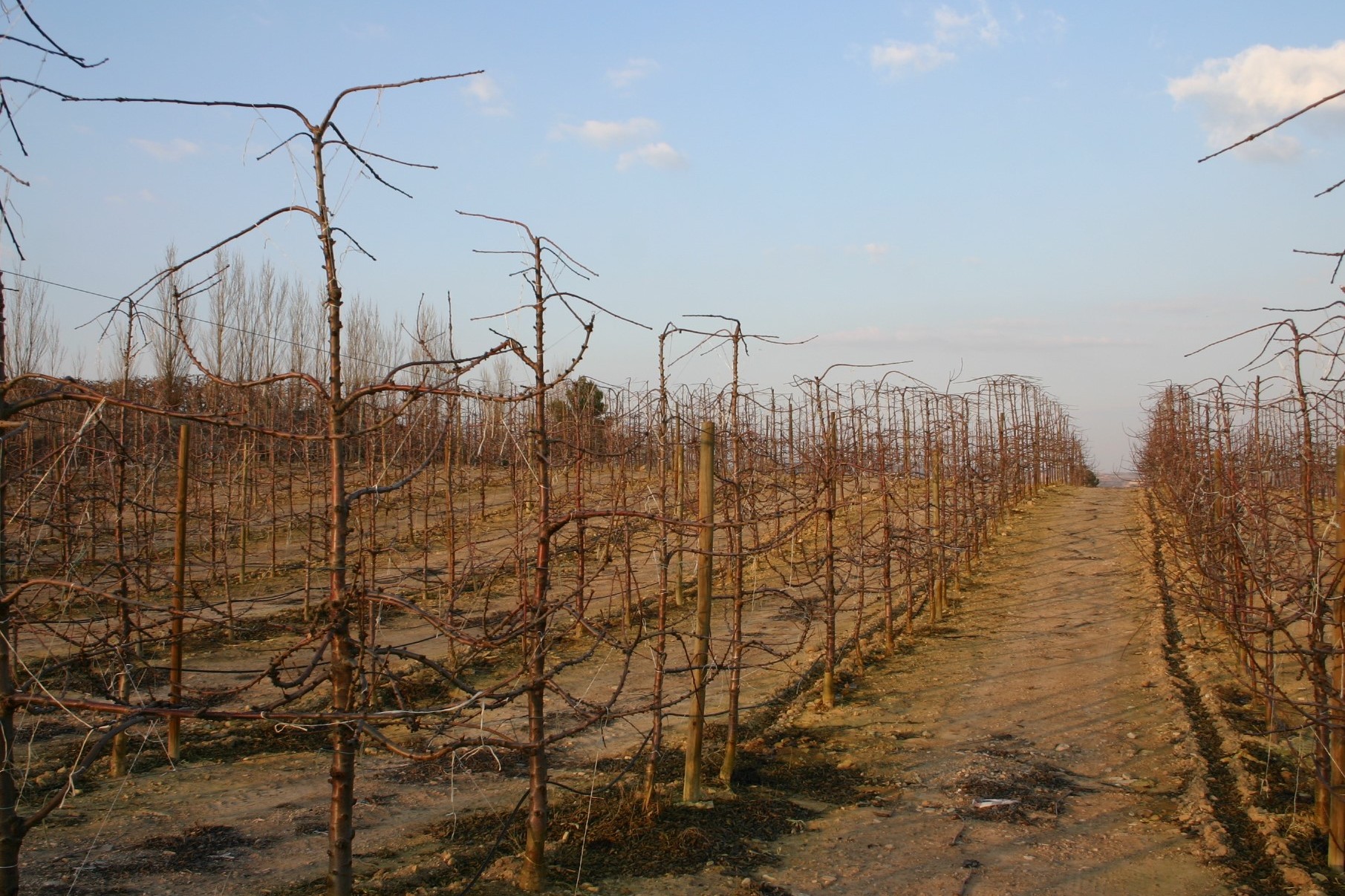 Figure 2. High-density orchard using the Solaxe training system
Figure 2. High-density orchard using the Solaxe training system
They can only subscribe to the policy covering hail and exceptional risks, such as hurricane-force winds or floods.
Cherries account for 24% of all sweet fruit grown in Aragon, with approximately 13,253 hectares dedicated to cultivation—4,115 of dryland and 9,138 of irrigated land.
Varieties and Production Areas
The main producing counties are Calatayud, Valdejalón, Ribera Baja del Ebro, Bajo Cinca, Aranda, Campo de Cariñena, Campo de Daroca, Cinca Medio, and Bajo Aragón-Caspe.
More than one hundred cherry varieties are grown in Aragon, allowing for staggered ripening and an extended harvesting period from May to early August.
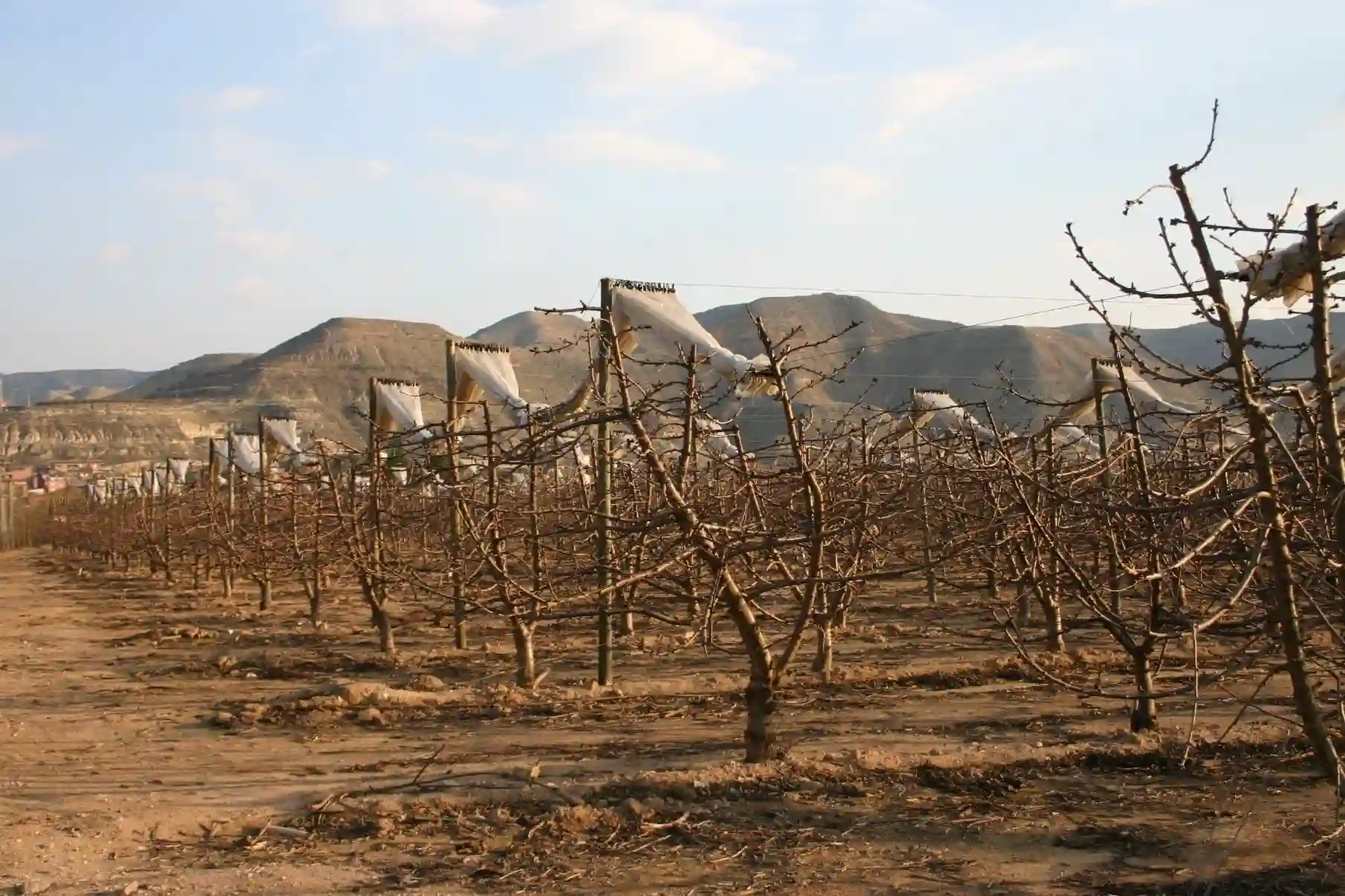 Figure 3. Retractable rain covers
Figure 3. Retractable rain covers
The most important varieties are Lapins, Frisco, Nimba, Red Pacific, Sweet Ariana, and two highly prized heritage varieties: Burlat and Napoleón.
The main difference between them is the harvest period. The season begins in spring and lasts through summer, peaking between May and June.
Local Areas and Varieties
The earliest cherries come from the Bajo Aragón–Caspe area, particularly in the regions of Caspe, Maella, Mequinenza, and Chiprana. With around 1,328 hectares under cultivation, the average yield of the early Caspe cherry (Burlat and Carly varieties) ranges from 8,000 to 10,000 kg per hectare.
Next comes the harvest from Fraga, in the counties of Bajo Cinca, Cinca Medio, and La Litera. A bit later, cherries are harvested in Valdejalón, and finally in the Calatayud area, in the Jalón, Jiloca, and Manubles river valleys.
With around 3,300 hectares across more than 20 municipalities and 63 operators including producers and traders, the counties of Calatayud and Aranda are Aragon’s leading cherry-producing regions.
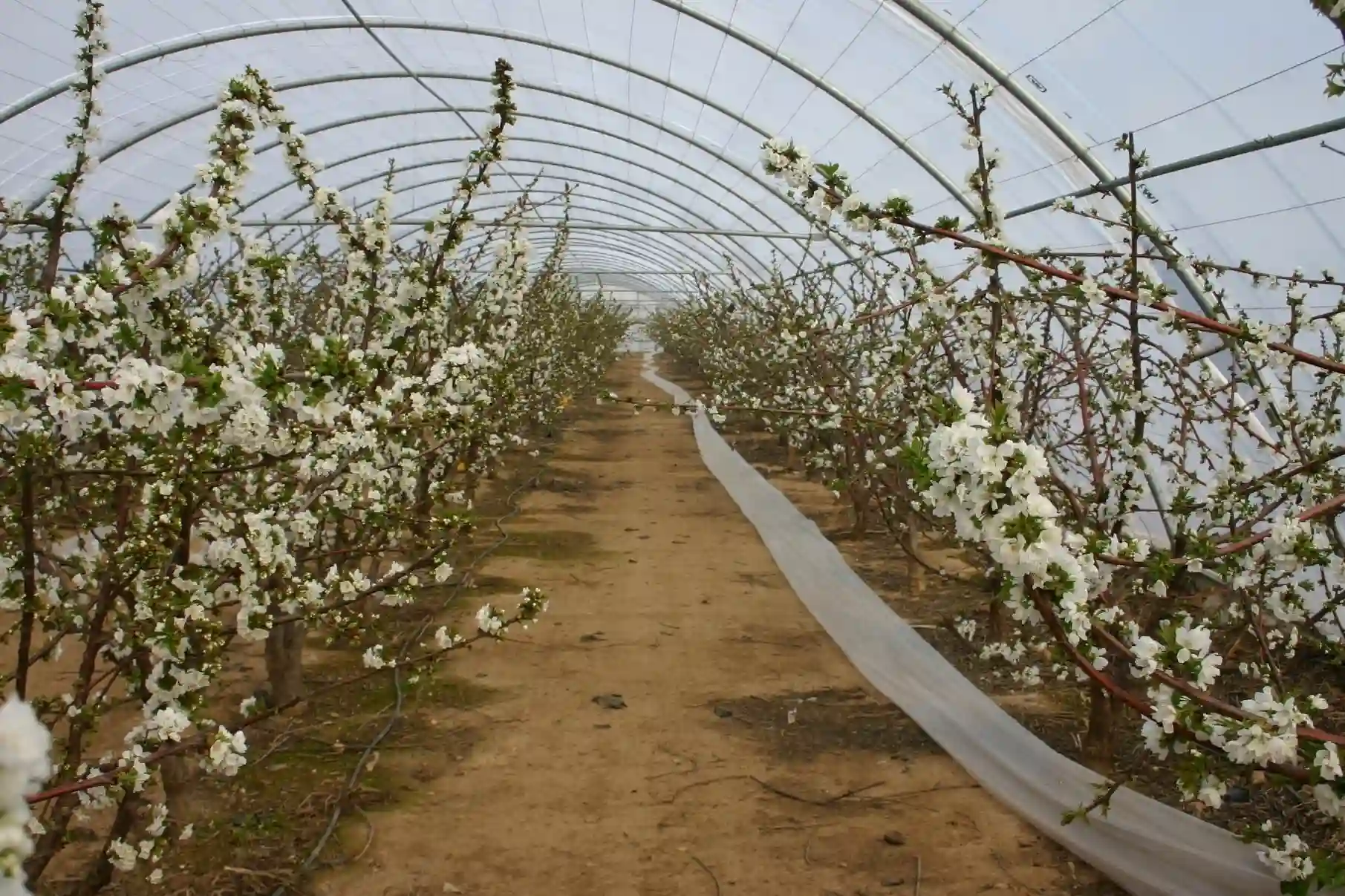 Figure 4. Cherry orchard in a heated greenhouse
Figure 4. Cherry orchard in a heated greenhouse
The annual yield is around nine to ten million kilograms. Farmers, cooperatives, and businesses, with the support of the Aragon government, have promoted the creation of a quality label in the form of a Protected Geographical Indication (PGI) or Protected Designation of Origin (PDO).
Quality Label and Export
The initiative is led by the Association for the Promotion of Cherries in the Community of Calatayud and the Aranda county. In the latest sector meeting, Agriculture Councilor Javier Rincón promised the Aragon government’s support to establish a quality label, assuring that funding would not be an issue.
This cherry is grown at high altitudes and has special organoleptic properties that set it apart. It features a larger size, notable appearance, optimal sugar content, and firmness, making it ideal for both domestic and international markets.
The harvest of this cherry is later, a key factor in the markets where it is sold, also affecting the selling price.
The cherry is not just an economic driver in these counties, but also a symbol of commitment to local development and excellence in agriculture.
International Markets and Fairs
They believe a quality label will be crucial to ensure the growth and recognition of Calatayud cherries in international markets. They are confident that this step will help ensure that the efforts and dedication of farmers translate into greater visibility and prestige for their flagship product.
A large share of the crop is exported, mainly to EU countries such as France, the United Kingdom, Germany, Italy, and the Netherlands. To a lesser extent, exports reach the Persian Gulf and Hong Kong, with eyes set on China.
A clear example of the export-oriented mindset is seen in the cherries of Mequinenza, in the Bajo Aragón-Caspe region. Producing one million kilograms, the earliest varieties are destined for the national market due to their delicacy, while the later, more resilient ones are exported to central and northern Europe.
The medium-term goal of producers is to access Asian markets, especially China, where this fruit is highly appreciated by consumers.
Events and Seasonal Work
Various initiatives have sprung up around cherries, such as fairs, culinary festivals, and tourist routes to enjoy the blossoms. In La Almunia de Doña Godina, the event is called *La Villa en Rosa*.
In addition to Bolea (Huesca), there are cherry fairs in Albalate del Arzobispo (Teruel province) and in the Zaragoza municipalities of El Frasno and Ricla.
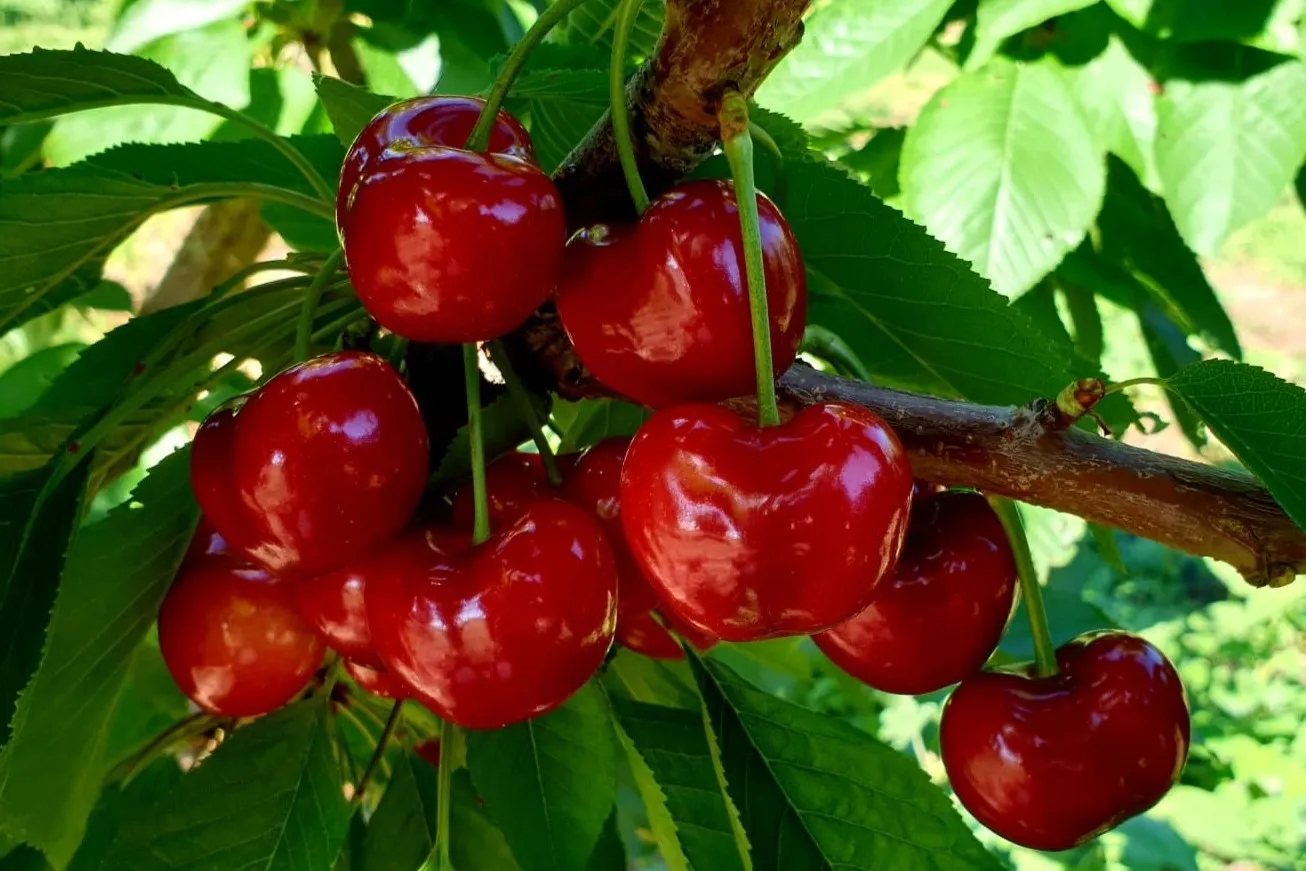 Figure 5. Sweet Stephany, a new medium-late ripening variety
Figure 5. Sweet Stephany, a new medium-late ripening variety
In Ricla, 30 companies are dedicated to cherry production, marketing between eight and ten million kilograms annually, of which 50% to 60% is exported or sold in gourmet markets.
The artisanal cultivation in Bolea yields around 50,000 kg annually. Cherries represent 90% of the economy of the small town of El Frasno, where about 45 farmers are employed in the sector.
Arrival of Seasonal Workers
The first cherries to reach the market are the early varieties from Bajo Aragón-Caspe, where preparations are underway for the arrival of 3,000–4,000 seasonal workers needed for the harvest. Caspe, the municipality that hosts the most, sees its population—over 10,000—rise by 30% in just a few days.
To manage this influx, institutions and relevant entities have started planning resources through a Working Group convened by the Caspe City Council, in collaboration with the county government.
The campaign includes reception points, a shower area, and food distribution at Red Cross facilities, managed by municipal staff and a pair of social workers employed by the county.
Their job is to identify the needs or problems of seasonal workers and report them to social workers. In addition, the county government is designing and installing numerous information signs about services and messages promoting coexistence.
Image source: SL Fruit Service
Javier Ortega
Valencia Fruits
Italian Berry - All rights reserved










